
HOW TO SELECT A FRAME FOR YOUR ARTWORK
To frame, or not to frame? This is a question that comes up frequently with our clients here at Laasya Art, typically after they have purchased an artwork and are preparing to hang it in their home. Many clients assume that framing is essential, but this is not always the case. The only exception is works on paper, such as drawings or limited edition screen prints, which must be framed for their own protection.
If you are debating whether or not to frame your newest piece, here are a few of my tried-and-true tips for framing artwork, both for paintings on canvas and works on paper.
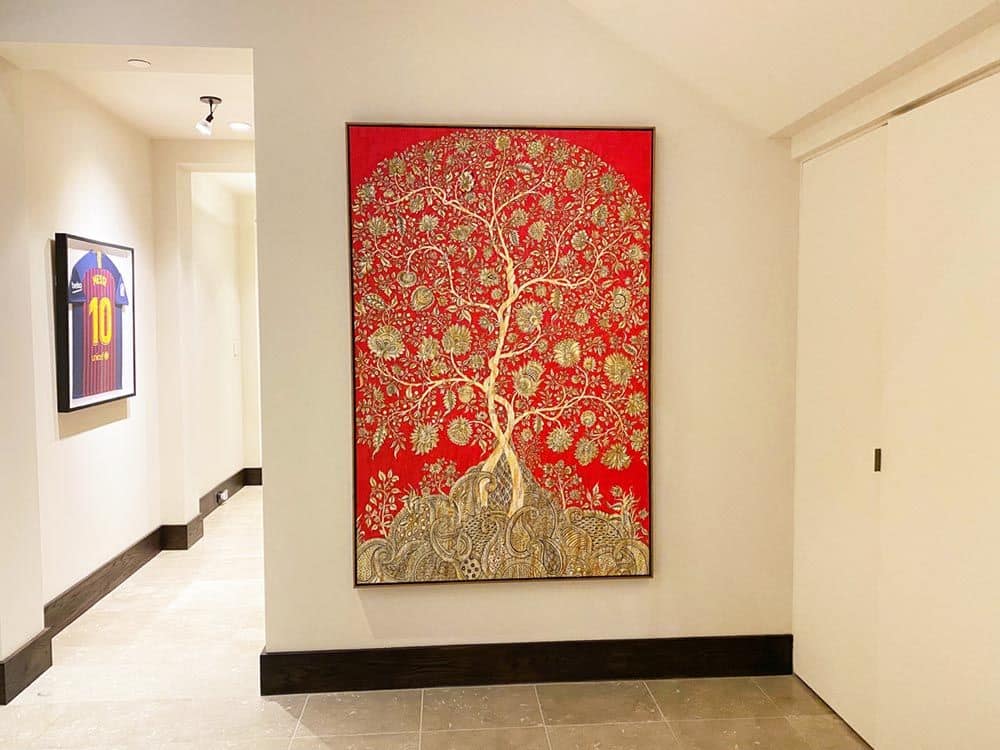
FRAMING CANVASES
First, framing a painting is optional — depending on whether or not the sides have been painted, you do not always have to frame canvas! At the same time, a frame can help integrate the painting into a home’s existing decor and present a more polished look overall. So, if you choose to add a frame or would simply like to explore this option, keep in mind the following to pick the most appropriate frame:
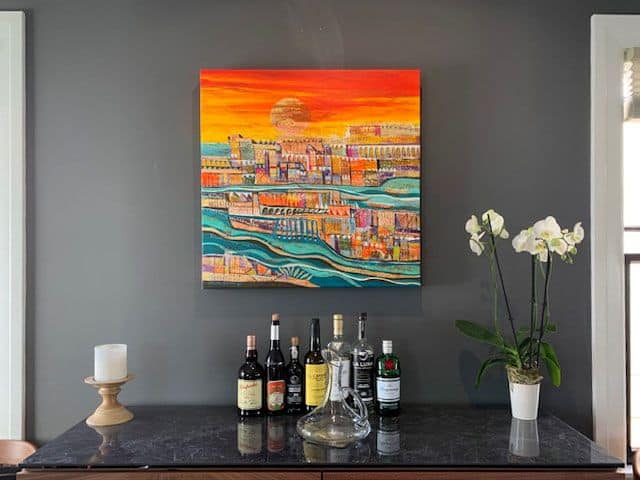
- If the sides of the canvas have been painted, a frame is not a necessity but more of a stylistic choice. At Laasya Art, we do specifically ask our artists to paint the sides of their canvas paintings so that each client has the option of framing or not, which results in considerable cost savings as frames can be expensive. If you are undecided, you can first hang the painting without a frame and see how that looks for a week or two.
- If a painting has a very complex image or texture — like mixed media works by artist Basuki Das Gupta, for example — we recommend leaving it unframed if the sides have been painted, as the frame will add yet another layer of complexity.
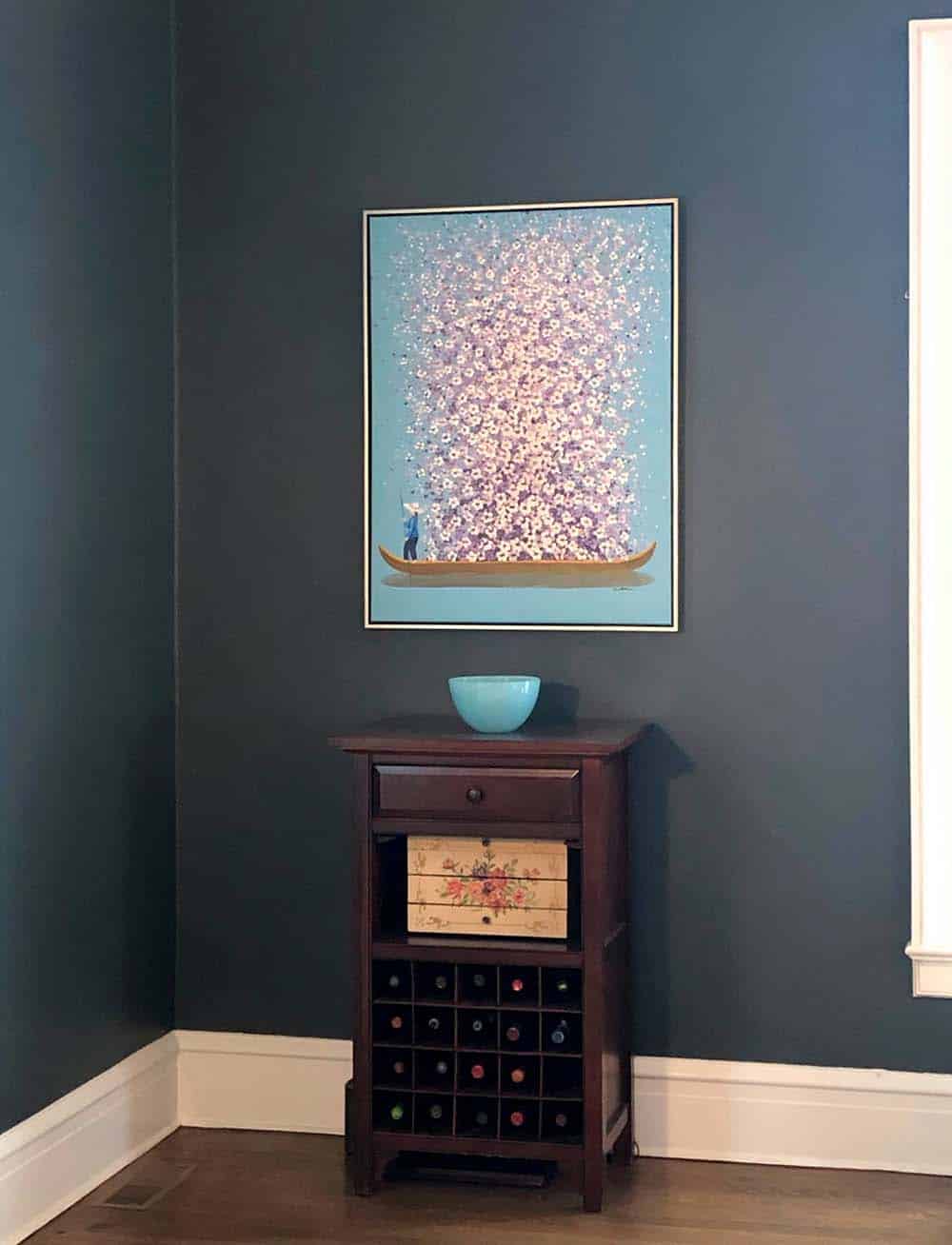
- If you decide to frame a canvas that is painted on the sides, our first choice is a floater frame in a solid color, for an elegant, finished look that does not distract from the art itself. In fact, floater frames are the most common type that we recommend to clients at Laasya Art.
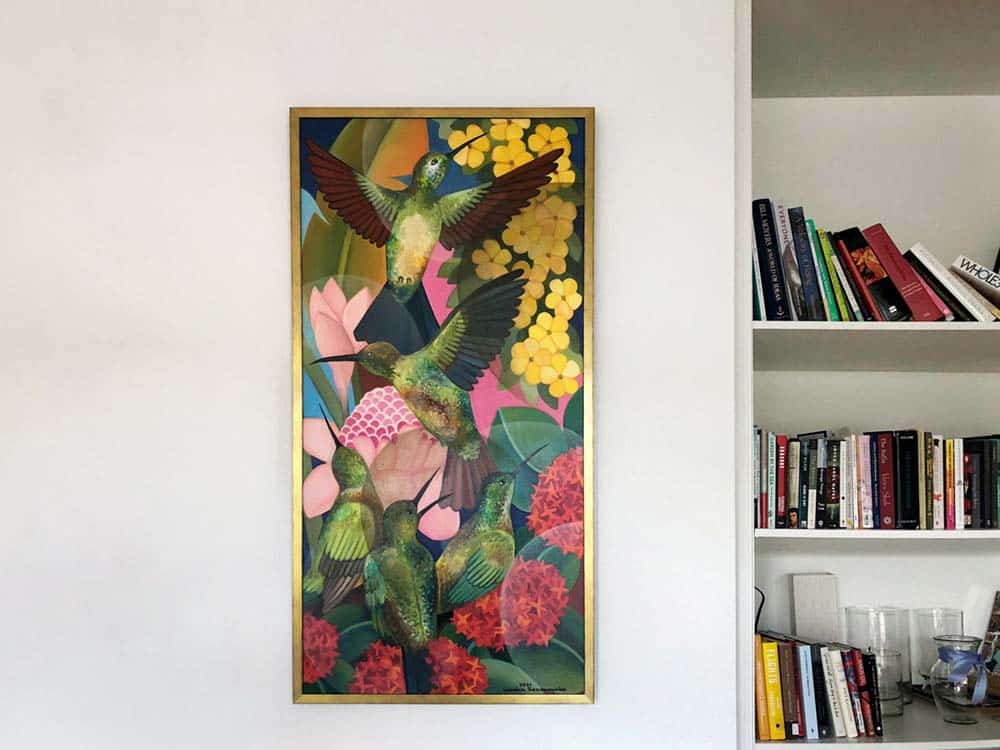
- If the sides of the canvas have not been painted, however, we do recommend adding a non-floater frame. Typically, we recommend a frame that complements the colors in the painting and also gels with the decor in the space. If the overall vibe of your home is modern, for example, a minimalistic frame will work best. On the other hand, if the overall aesthetic of your home is detailed and ornate, a similar frame can help the painting fit in.
- Ultimately, when choosing a frame, it is important to remember that the painting is the primary story. The frame’s role is to enhance the painting while remaining in the background so to speak — the two should never compete for attention.
FRAMING PRINTS AND WORKS ON PAPER
Unlike paintings on canvas, serigraphs (or fine art prints) must be framed to properly protect the paper from warping and discoloration.
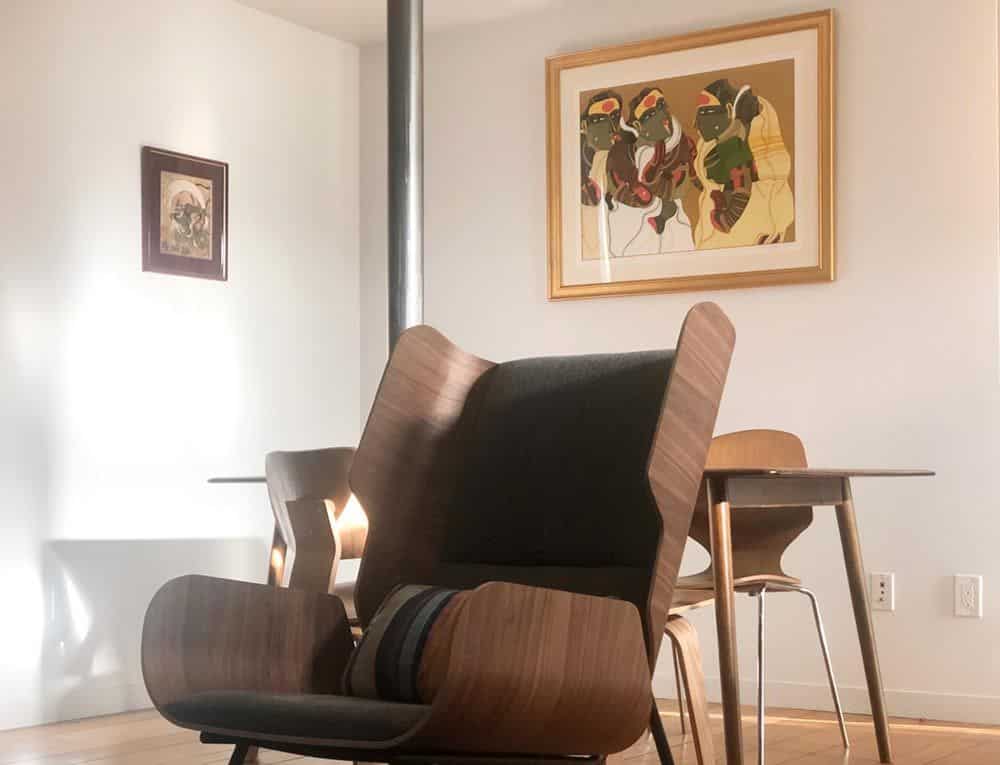
As with paintings, there are a multitude of styles and options when it comes to frames, but with special attention to preservation. Here are some tips on specifically framing prints:
- With signed prints where the signature is on the front of the paper, the matting should leave both the edition number and artist signature visible.
- It is also important to use mounts and spacers to maintain a gap between the print and the glass, which prevents the paper from sticking to the plexi or glass.
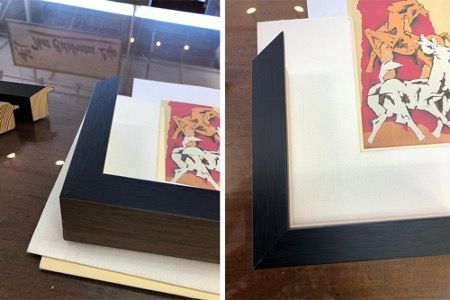
- With prints, it is often best to select a clean, smart-looking frame like the black wood in the image above. A frame should always enhance the artwork, not draw attention to itself.
- There are 3 types of plexi available: glare, non-glare and museum plexi, with glare being the cheapest and museum plexi being the most expensive.
- Regular glare plexi offers much better clarity than non-glare plexi, but may be an issue if there is a lot of light that will reflect on your artwork.
- Museum plexi offers the best by way of clarity, weight and safety and it is our top choice, but it is also the most expensive option. Within museum plexi, there are also reflective and non-reflective options, with non-reflective being the most expensive.
- Glass can be used instead of plexi and offers very good clarity. It is heavier, however, and if the frame falls, there is also the risk of breaking into pieces and damaging the work itself. Plexi is overall lighter and safer than glass especially if there are young kids at home, so we typically recommend opting for plexi.
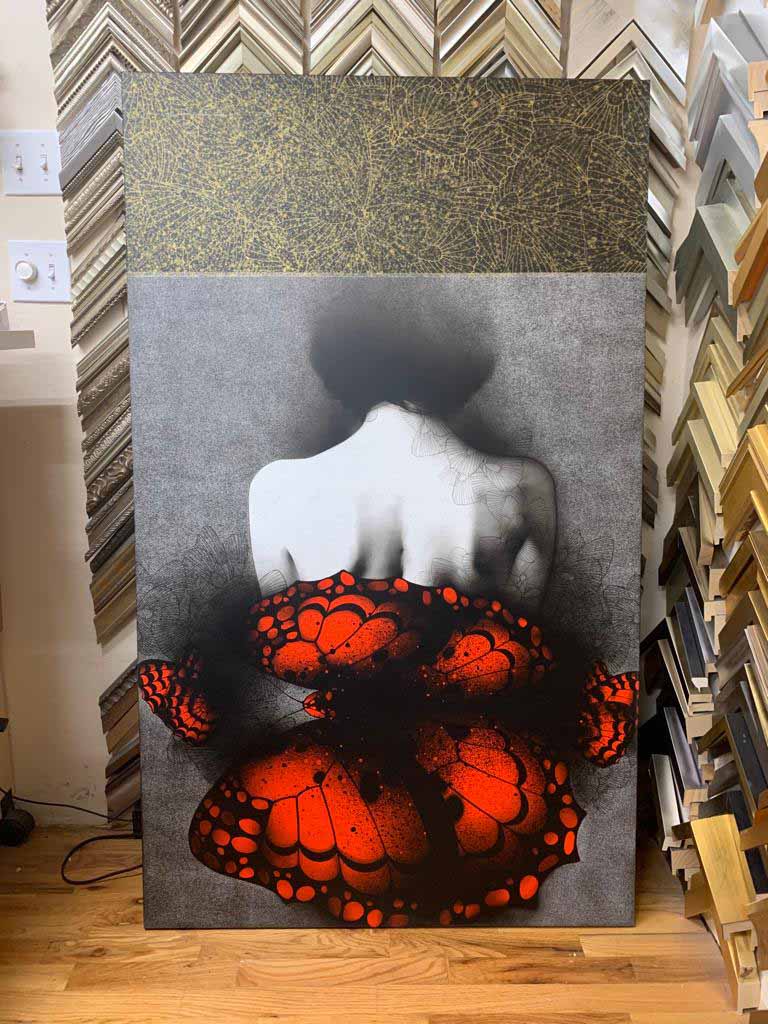
FINDING A LOCAL FRAMER
When choosing a local framer, we recommend working with a small business as opposed to a larger franchise operation. Typically, we find that small businesses offer better pricing and more attentive, individualized service. Here are some tips on vetting a framer:
- If possible, work directly with the owner, who will have the most experience and can advise you on the style and type of frame. Many framers who have been in the business a long time have a keen design sense and are adept at offering framing recommendations in minutes. That’s where we find one of their biggest value adds.
- Read online reviews and look at any available photos of framing samples. Also feel free to call the framer and ask questions on pricing, services offered and timelines to get a sense of what it would be like to work with them.
- Ask if the framer offers delivery and professional installation if needed. Prices can vary quite significantly for these services.
- For works on paper, it may help to explore the option of working with a large franchise store, such as Michaels or similar, which can usually offer better pricing on framing. These companies purchase glass/plexi in large volumes and hence get material for lower prices (which they pass on to clients), compared to a small business that orders material in small quantities and hence does not get volume discounts. Some of these franchise stores also occasionally offer coupons that reduce the price further, so it’s a good idea to always ask for them.
- Ultimately, it is always important to conduct your own due diligence before selecting a framer to work with.
We hope this is a helpful guide for deciding whether or not to frame your artwork! If you have more questions about living with art in the home, check out our best tips on art care, or explore our collection of traditional and contemporary Indian art for sale to browse or buy online.
— Sonia Nayyar Patwardhan

Leave a Reply
You must be logged in to post a comment.